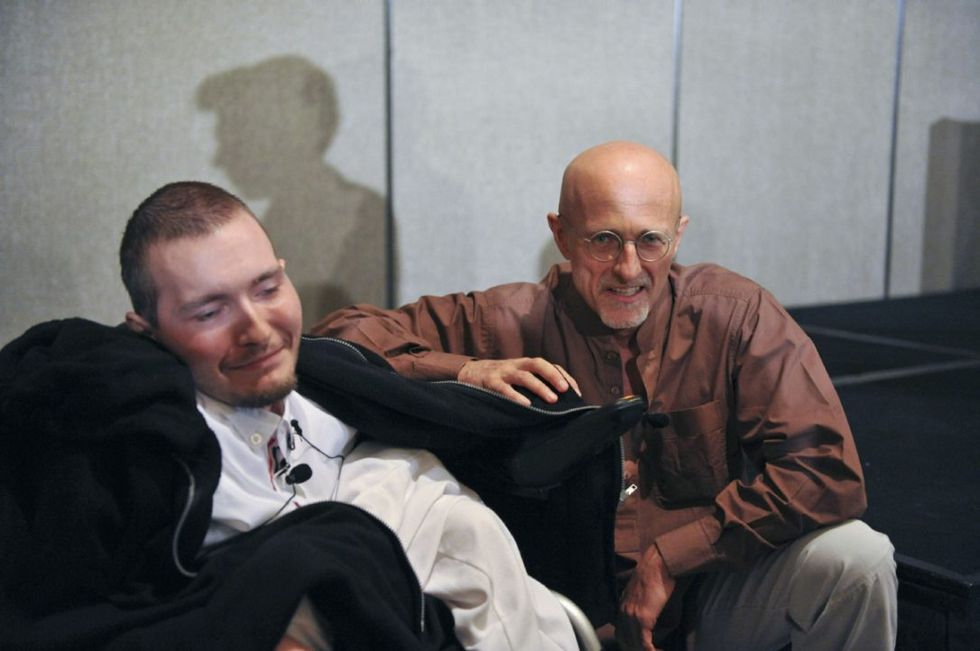As a neuroscience major and a complete nerd of anything involving the brain, I follow a lot of neuroscience groups and pages on Facebook. One day, a few months ago, I came across an article promoting a new type of transplant. CBS News claims that neuroscientist Dr. Sergio Canavero plans to perform the very first human head transplant in 2017. Canavero will be assisted by Chinese surgeon Dr. Xiaoping Ren.
Recently the two doctors found a candidate to undergo the extensive surgery, a Russian man named Valery Spiridonov. This man is only 30 years old and suffers from a rare disease called Werdnig-Hoffmann Disease which breaks down muscle and kills nerve cells in the brain and spine. This disease is threatening to Spinidonov’s life and he claims that if there is a possibility that the surgery can work, then he will try his chances. He would rather try than to not try and be stuck in a motorized wheelchair for the rest of his life. Despite the long process that these doctors have had to go through, the science community is baffled by the plan and speaks out against the surgery.
With this being said, the surgery could be a new innovative approach to saving people’s live with rare disorders or diseases such as Spiridonov. Doctors are speaking out saying that the surgery could be considered “junk science” and a way to promote false hope to an individual who does suffer from paralyzing diseases. One critic even went the lengths to say the doctors should be charged with murder if Valery Spinidonov does end up dying on the table. But have these critics looked at the science involved with the procedure?
As a matter of fact, Canavero has published a document of his plans, in detail. He first started his medical experiment on mice where the experiment was later published in the journal Surgical Neurology International. The doctor plans to put both the patient’s body and a donor body in cold temperatures down to about 50 degrees Fahrenheit to delay tissue death during the operation. They will sever the spinal cords at the same time, using a custom crane to move the head to the donor body. A gel called polyethylene glycol (PEG) will be added to both spinal cords to promote cell growth and help fuse the two together. The body would then be kept in a medically induced coma for three to four weeks which will prevent movement. Also, electrodes will be implanted to keep the nerves alive and stimulate the growth of new nerves from the transplant. These electrodes are expected to strengthen the existing nerves and the new connection. Canavero believes that the surgery could have a succession rate of 90 percent, which is extremely high for such a risky procedure.
However, there are some doctors, critics, and others that think this transplant will be hurting the hospital systems because will cause less available donor organs for other transplant surgeries such as liver or heart transplants. There are technically more transplants needed for patients with heart or liver issues but this operation would be a new innovation to the face of science. If Canavero can make this procedure run smoothly then there could be bigger innovations made, like synthesizing a body if there isn’t any available. We already can make organs from cells, so why not take it a step further.
In my opinion, not that I can make one, would be to let Dr. Canavero and Dr. Ren perform the human head transplant. If it’s successful, then I think they should be allowed to take it a step further. If the procedure is a failure, then I think Dr. Canavero should be allowed to research his mistakes, improve the transplant and possibly try again. I, along with many others, is amazed by the strength in medical technology. If this procedure means saving lives of patients who are deemed dead within a few months or years, then I say go for it. Of course, there will be some legal documents that will need to be taken care of but I think the most important aspect here is the fact that these two doctors will be saving lives.

















